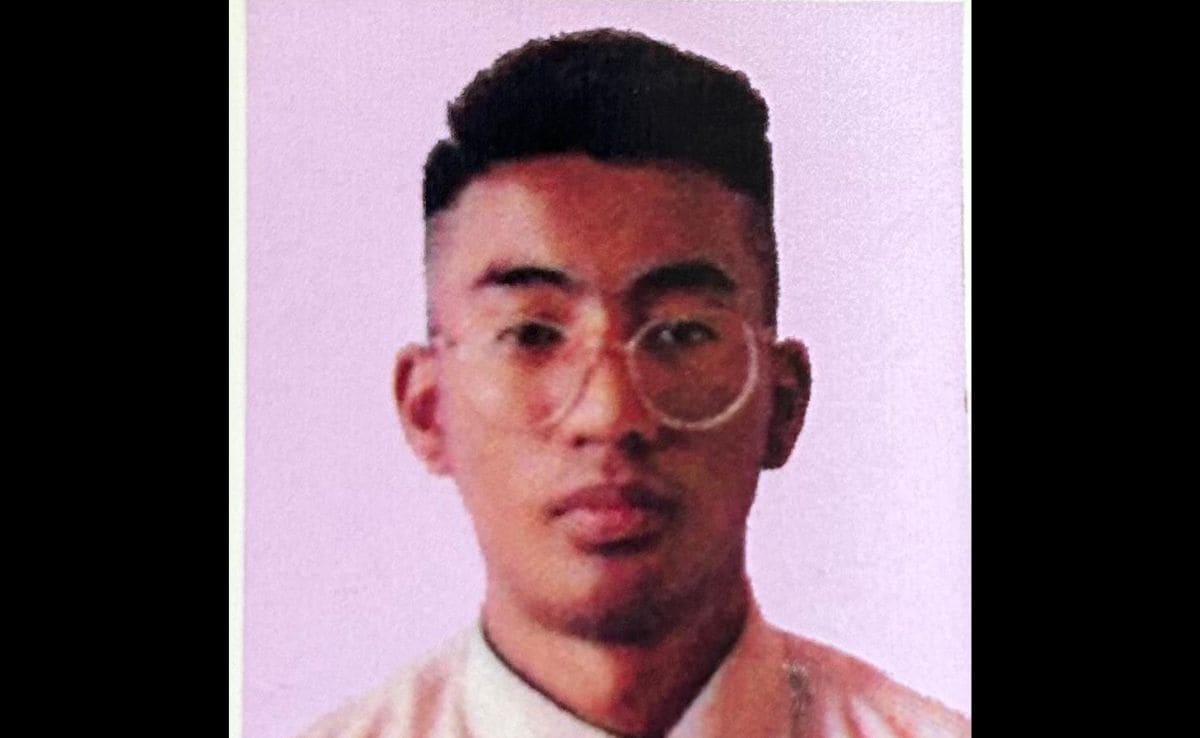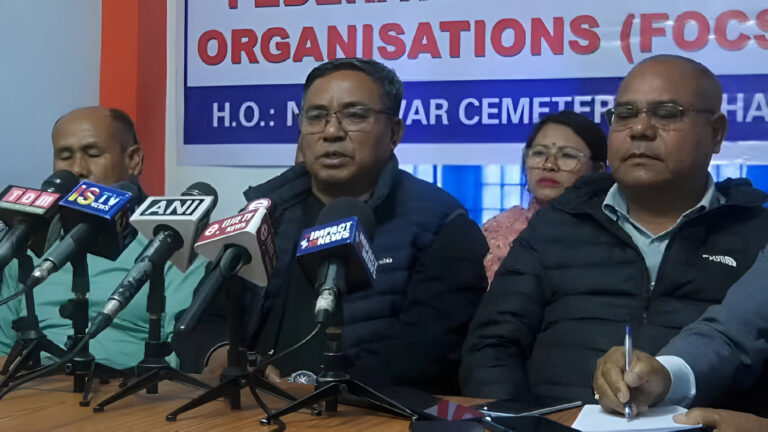Manipur’s Joint Action Committee Demands Immediate Rescue of Missing Youth
*In a recent development, the Joint Action Committee (JAC) in Manipur has issued a 24-hour ultimatum to the state government, demanding the safe return of 20-year-old Luwangthem Mukesh, who went missing on March 16, 2025. Mukesh, a resident of Keisampat Leimajam Leikai in Imphal West district, was last seen driving his Maruti Alto vehicle. CCTV footage indicates he was at Nambol Police Station at 3:16 PM and later at Bishnupur Bazar at 3:40 PM on the day of his disappearance. Concerns have escalated due to reports suggesting he may have been spotted in Jouzangtek, an area currently experiencing ethnic tensions. *
The Formation and Role of the Joint Action Committee
In response to Mukesh’s disappearance, a Joint Action Committee (JAC) was swiftly formed by concerned community members and local leaders. The primary objective of the JAC is to coordinate efforts between the community and authorities to ensure Mukesh’s safe return. By issuing a 24-hour ultimatum to the Manipur government, the JAC aims to expedite investigative processes and search operations. Such committees often play a pivotal role in mobilizing public support and maintaining pressure on authorities to act promptly in missing person cases.
The Disappearance of Luwangthem Mukesh: A Timeline
- March 16, 2025: Mukesh leaves his residence in Keisampat Leimajam Leikai, Imphal West district, driving a Maruti Alto.
- 3:16 PM: CCTV footage captures Mukesh at Nambol Police Station.
- 3:40 PM: He is seen at Bishnupur Bazar.
- Post 3:40 PM: Mukesh’s whereabouts become unknown.
The swift formation of the JAC and their immediate actions underscore the community’s deep concern and proactive stance in addressing the situation.
Community Mobilization and Protests
In the days following Mukesh’s disappearance, community members, led by the JAC, organized protests and sit-ins to draw attention to the case. These demonstrations aimed to pressure authorities into intensifying search efforts and keeping the public informed about progress. Such collective actions highlight the community’s solidarity and determination to ensure the safety and well-being of its members.
Authorities’ Response and Search Operations
Upon receiving the complaint from Mukesh’s father, L. Gyanendra, the Manipur police initiated an inquiry into the disappearance. Collaborative efforts between the police and security forces led to search operations in areas suspected to be linked to the case. The utilization of CCTV footage was instrumental in tracing Mukesh’s movements up to a certain point, aiding in narrowing down potential search zones.
Concerns Over Ethnic Tensions
Reports suggesting Mukesh may have been spotted in Jouzangtek have heightened concerns. This area, straddling the border between Bishnupur and Churachandpur, has been a hotspot for ethnic violence in the state. The possibility of Mukesh being in such a volatile region adds urgency to the search efforts, as his safety could be at greater risk amidst ongoing tensions.
The Role of Media and Public Awareness
Local media outlets have played a crucial role in disseminating information about Mukesh’s disappearance. By highlighting the case, they have kept the public informed and maintained pressure on authorities to act swiftly. Public awareness campaigns, facilitated through social media platforms and community meetings, have also been instrumental in mobilizing support and resources for the search operations.
Similar Incidents in Manipur
Mukesh’s disappearance is not an isolated incident in Manipur. There have been previous cases where individuals have gone missing under mysterious circumstances, leading to public outcry and demands for action. For instance, in November 2024, the disappearance of 56-year-old Laishram Kamalbabu Singh prompted protests and extensive search operations.
SSBCrack Such incidents highlight the challenges faced by authorities in ensuring public safety and the critical role of community vigilance.
Challenges in Search and Rescue Operations
Conducting search and rescue operations in regions with ethnic tensions presents unique challenges. Security forces must navigate sensitive areas carefully to avoid exacerbating conflicts. Additionally, the rugged terrain and limited infrastructure in certain parts of Manipur can hinder swift search efforts. Effective coordination between various agencies and community members is essential to overcome these obstacles and ensure successful outcomes.
The Psychological Impact on Families and Communities
The disappearance of a loved one has profound psychological effects on families and communities. Feelings of anxiety, helplessness, and grief are common among family members. Communities may experience heightened fear and mistrust, especially if such incidents are recurrent. Providing psychological support and counseling to affected families is crucial in helping them cope during such distressing times.
The Importance of Timely Action
Timely action in missing person cases is paramount. The initial hours and days are critical for gathering evidence, tracing movements, and mobilizing resources. Delays can lead to loss of crucial leads and diminish the chances of a safe recovery. Authorities must have protocols in place to respond promptly and efficiently to such reports, ensuring that all necessary measures are taken without delay.
Community Policing and Building Trust
Building trust between law enforcement agencies and communities is essential for effective policing. Community policing initiatives, where officers engage with local residents, can foster better relationships and encourage the sharing of information. In regions with ethnic tensions, such initiatives can bridge divides and promote a sense of security among diverse groups.
Government and Law Enforcement Response
So far, government officials and law enforcement agencies have acknowledged the concerns raised by the Manipur Joint Action Committee. Statements from local authorities emphasize that efforts are underway to locate the missing youth and that every resource is being mobilized to ensure a thorough investigation.
However, critics argue that while promises of action are important, the real test lies in the effective implementation of these measures. The demand for transparency means that the public expects regular updates and visible results—not just assurances that “everything is being done.” This scrutiny is essential in a democracy, where accountability is the cornerstone of trust between the people and their institutions.
Steps Toward Resolution: What Needs to Happen Now?
Addressing the issue of a missing youth in a timely and effective manner requires a multi-layered approach that tackles both immediate and long-term challenges. Here are some strategic steps that could pave the way toward a resolution:
1. Swift Mobilization of Resources
The first step is to ensure that all available resources are rapidly deployed. This means assembling specialized investigative teams, leveraging modern surveillance tools, and coordinating with local communities. Time is of the essence, and every minute counts in these situations.
2. Clear Communication Channels
Establishing robust communication channels between the authorities and the community is crucial. This could involve setting up hotlines, organizing community meetings, and using social media platforms to disseminate accurate information. Transparency in communication not only keeps everyone informed but also fosters trust.
3. Independent Oversight and Transparency
Introducing an independent oversight mechanism can help ensure that the investigation remains transparent and free of bias. This might involve third-party observers, regular public briefings, and comprehensive audits of the rescue operation. Such measures can reassure the community that no stone is left unturned in the search for truth.
4. Strengthening Infrastructure and Training
Long-term solutions require investments in infrastructure and capacity building. Upgrading surveillance systems, enhancing training for law enforcement personnel, and improving coordination among various agencies will help prevent similar incidents in the future. The committee’s call for systemic reforms is a step in this direction.
5. Community Empowerment and Involvement
Finally, empowering the community to actively participate in the rescue efforts can make a significant difference. By involving local volunteers, civic groups, and community leaders, the process becomes more inclusive. This collaborative approach ensures that the community is not just a bystander but a crucial partner in safeguarding public safety.
The Broader Implications: Lessons for Manipur
While the immediate focus is on rescuing the missing youth, this incident also serves as a wake-up call for the broader issues facing Manipur. It highlights the urgent need for:
- Enhanced Public Safety Measures:
A comprehensive review of local security protocols and investigative practices is needed to prevent future incidents. - Systemic Reforms:
Addressing bureaucratic inefficiencies and communication gaps can lead to a more resilient framework for handling emergencies. - Building Trust and Accountability:
Restoring public confidence in law enforcement and administrative bodies is vital for long-term stability. - Empowering Vulnerable Communities:
Strengthening support systems and community engagement initiatives can ensure that vulnerable populations are better protected.
A Glimpse Into the Future: Hope and Resilience
Despite the challenges, the spirit of resilience in Manipur remains unbroken. The collective efforts of the Manipur Joint Action Committee and the supportive voices from the community serve as a powerful reminder that even in the darkest times, hope can shine through. The demand for the rescue of the missing youth is not just about a single case—it is about building a safer, more accountable, and compassionate society for all.
Imagine a future where every citizen feels secure, where the bonds between the community and authorities are built on trust, and where every individual’s voice is heard. That’s the vision driving the current movement—a vision where urgent action today lays the foundation for a better tomorrow.
Conclusion: A Call to Action
In wrapping up our exploration of this pressing issue, it’s clear that the call by the Manipur Joint Action Committee is more than a reaction to a single incident—it’s a powerful demand for change. The missing youth is a symbol of the broader challenges that the region faces, and their rescue is imperative not only for the sake of one individual but for the health and safety of the entire community.
We must remember that in a society built on the principles of justice and accountability, every voice matters. The rallying cry of the Joint Action Committee is a reminder that it is our collective responsibility to ensure that no one is left behind. The time to act is now—let us work together to transform this crisis into an opportunity for meaningful, lasting change in Manipur.
FAQs
- What prompted the Manipur Joint Action Committee to demand the rescue of the missing youth?
- The Committee was motivated by growing concerns over the safety and security of local youth, and the need for swift, transparent action to locate the missing individual, which reflects broader systemic challenges in the region.
- Who makes up the Manipur Joint Action Committee?
- The committee comprises community leaders, activists, and representatives from various civil society organizations dedicated to ensuring public safety and accountability in Manipur.
- What specific actions are being demanded by the committee?
- The demands include an immediate rescue operation, a transparent and independent investigation, enhanced community involvement, systemic reforms in law enforcement, and public accountability for any lapses in handling the case.
- What are some of the challenges faced in rescuing the missing youth?
- Challenges include inadequate resources and infrastructure, bureaucratic delays, communication gaps, and a general trust deficit between the community and authorities, all of which hinder timely intervention.
- How does this case impact the broader community in Manipur?
- Beyond the individual tragedy, this case highlights systemic issues in public safety and governance, urging reforms and stronger community engagement to prevent future incidents and build lasting trust in local institutions.



